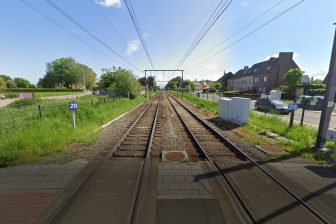Audit on Special Report No 6/2005 on TEN-T
Brussels, Belgium – Information note of the European Court of Auditors on Special Report No 6/2005 on the trans-european network for transport (TEN-T)[1]
The Community contributes to the establishment of trans-European networks in the area of transport (TEN-T) to promote cohesion, interconnection and interoperability of national networks as well as access to such networks across the European Union. To achieve this, the Community finances infrastructure projects and studies for roads, railways, inland waterways, airports, ports, satellite navigation and traffic management systems.
The Court‘s audit assessed the extent to which the Commission‘s management system – including the design and implementation of the legal framework, administrative procedures and internal control system – was conducive to the economic, efficient and effective implementation of TEN-T.
The audit found that the execution of the 14 TEN-T priority projects is currently behind schedule. In particular, cross-border sections are facing major difficulties since they receive less priority at national level and require greater co-ordination efforts. Also, TEN-T financial aid is allocated in an overly fragmented way and is not sufficiently focused on cross-border projects (or project sections). As such, TEN-T cannot achieve its European added value to the fullest.
Some important weaknesses remain in the Commission‘s financing decisions, which are the main legal basis for awarding TEN-T financial aid to single projects. In particular, the difference in scope between the two main intervention forms (studies and works) is not sufficiently clear.
Complex annual administrative procedures for evaluating and selecting TEN-T projects have been established by the Commission and these have not always led to relevant information being available for the evaluation. Consequently, this has caused some problems in properly documenting the evaluation process. In addition, not all evaluation criteria established by the TEN regulation were fully addressed by the Commission.
The tools used by the Commission to follow up TEN-T projects are insufficient to allow monitoring to be carried out effectively and efficiently. The various reports on project status and progress submitted by beneficiaries do not always provide sufficiently relevant information to the Commission. Furthermore, the Commission systematically carry out neither on-site project inspections nor ex-post impact assessments.
Project evaluation and monitoring are impeded by the excessive workload of Commission project officers. Moreover, many of these project officers do not have sufficient technical expertise on transport issues.
The co-ordination of the various sources of Community funding for transport infrastructure projects by the various Directorates-General does not allow the Commission to detect all cases of over- or double funding.
The Court recommends that the Commission, together with the Member States, gives priority to financing those TEN-T project sections, in particular cross-border project sections, whose completion is essential if TEN-T is to achieve its full European added value.
The Commission should also develop an explicit methodology for evaluating proposals submitted under TEN-T and publish it in a manual.
Project monitoring should be strengthened by defining minimum standards for the reporting of project status, by more frequently performing on-site project inspections and by carrying out ex-post impact assessments. Such improvements would also allow lessons to be learned regarding the efficient implementation of TEN-T and the overall effectiveness of the Community funding in this area.
The Commission should consider returning to a centralised form of TEN-T project management within DG TREN. This should also entail the adaptation of the number and expertise of staff resources to be in line with the requirements of managing the TEN-T activity with the substantially increased number of projects resulting from a higher budget allocation.
Finally, the Commission should establish appropriate legal bases, procedures and tools in order to improve the co-ordination of transport infrastructure funding and to identify potential cases of over- or double funding. This should be done, where necessary, in cooperation with the Member States.
In its replies, the Commission acknowledged most of the observations raised by the Court and the DG in charge is already taking corrective action for many of them, such as the
- development of new model financing decisions,
- modification of project application and appraisal forms,
- definition of TEN-T evaluation guidelines,
- revision of project reporting procedures,
- allocation of more staff to TEN-T project management,
- creation of a TEN-T Executive Agency, and
- improved co-ordination of EU transport infrastructure funding within and between the Commission services.
The Commission considers that the state of advancement of TEN-T projects is mainly under the control of the Member States. Member States also share the responsibility with the Commission in addressing the fragmentation and focusing of budget allocation. The Commission highlighted that cross-border projects are already supported as one of the eight priorities set out in the TEN-T guidelines that aim to achieve European added value.
Special Report N° 6/2005 can be downloaded from www.eca.eu.int
[1] The sole purpose of this Information Note is to provide a summary. The Special Report, as adopted by the Court of Auditors, is available on the Court‘s website www.eca.eu.int and will shortly be published in the C series of the Official Journal of the European Union
U las zojuist één van de gratis premium artikelen
Onbeperkt lezen? Profiteer nu van de introductieaanbieding voor € 10,- per maand.
Bent u al abonnee?




